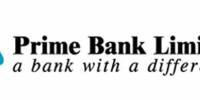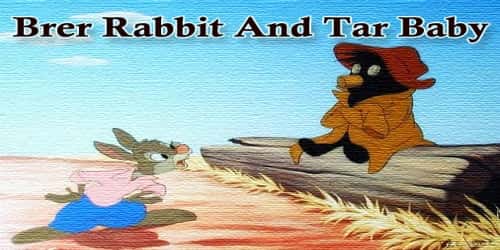Introduction
Advertising is a one-way communication whose purpose is to inform potential customers about products and services and how to obtain them. Promotion involves disseminating information about a product, product line, brand, or company. It is one of the four key aspects of the marketing mix. Advertising may be one form of promotion.
Case study on Advertising and Promotion

- Evaluate appropriate uses and applications for advertising in two given situations.
Answer: An important question is whether the spokesperson being used is effective and how the target market will respond to him or her. For example, Tiger Woods has proved to be a successful salesperson for Nike and Buick. Or a product spokesperson may be an excellent source initially buy, owing to a variety of reasons, may lose impact over time. For example, Britney Spears had been an effective spokesperson for Pepsi, particularly with the teen market. The question was, Will she be able to retain this relationship as she gets older? Apparently Pepsi thought not, as her contract was not renewed. In other instances, changes in the sources attractiveness or likeability of other external factors may lead to changes in source effectiveness.
Message Variables: Both the message and the means by which it is communicated are bases for evaluation. For example, in the beer example discussed earlier, the message never provided a reason for consumers to try the new product. In other instances, the message may not be strong enough to pull readers into the ad by attracting their attention or clear enough to help them evaluate the product. Sometimes the message is memorable but doesn’t achieve the other goals set by management. One study showed that 7 of the 25 products that scored highest on interest and memorability in Video storyboard Tests’ ad test had flat or declining sales. A number of factors regarding the message and its delivery may have an impact on its effectiveness, including the headline, illustrations, text, and layout.
Many ads are never seen by the public because of the message they convey. For example, an ad in which Susan Anton ate a slice of Pizza Hut pizza was considered too erotic for the company’s small-town image. Media Strategies: Media decisions need to be evaluated. Research may be designed to determine which media class (for example, broadcast versus print), subclass (newspaper versus magazines), or specific vehicles (which newspapers or magazines) generate the most effective results. The location within a particular medium (front page versus back page) and size of ad or length of commercial also merit examination. For example, research has demonstrated that readers pay more attention to larger ads. As shown earlier, a variety of methods have been employed to measure the effectiveness of advertising on the internet. Similarly, direct-response advertisers on TV have found that some programs are more effective than others. One successful direct marketer found that old TV shows yield more responses than first runs.
Another factor is the vehicles option source effect, “the differential impact that the advertising exposure will have on the same audience member if the exposure occurs in one media option rather than another. People perceive ads differently depending on their context.
A final factor in media decision involves scheduling. The evaluation of fighting versus pulsing or continuous schedules is important, particularly given the increasing costs of media time.
- Evaluate the role, organisation and functions of agencies in the advertising process
Answer: The steps involved in the process of advertising
The following are the steps involved in the process of advertising:
- Step 1 – Briefing: the advertiser needs to brief about the product or the service which has to be advertised and doing the SWOT analysis of the company and the product.
- Step 2 – Knowing the Objective: one should first know the objective or the purpose of advertising. i.e. what message is to be delivered to the audience
- Step 3 – Research: this step involves finding out the market behavior, knowing the competitors, what type of advertising they are using, what is the response of the consumers, availability of the resources needed in the process, etc.
- Step 4 – Target Audience: the next step is to identify the target consumers most likely to buy the product. The target should be appropriately identified without any confusion. For e.g. if the product is a health drink for growing kids, then the target customers will be the parents who are going to buy it and not the kids who are going to drink it.
- , then the target customers will be the parents who are going to buy it and not the kids who are going to drink it.
- Step 5 – Media Selection: now that the target audience is identified, one should select an appropriate media for advertising so that the customers who are to be informed about the product and are willing to buy are successfully reached.
- Step 6 – Setting the Budget: then the advertising budget has to be planned so that there is no short of funds or excess of funds during the process of advertising and also there are no losses to the company.
- Step 7 – Designing and Creating the Ad: first the design that is the outline of ad on papers is made by the copywriters of the agency, then the actual creation of ad is done with help of the art directors and the creative personnel of the agency.
- Step 8 – Perfection: then the created ad is re-examined and the ad is redefined to make it perfect to enter the market.
- Step 9 – Place and Time of Ad: the next step is to decide where and when the ad will be shown.
The place will be decided according to the target customers where the ad is most visible clearly to them. The finalization of time on which the ad will be telecasted or shown on the selected media will be done by the traffic department of the agency.
- Step 10 – Execution: finally the advertise is released with perfect creation, perfect placement and perfect timing in the market.
- Step 11 – Performance: the last step is to judge the performance of the ad in terms of the response from the customers, whether they are satisfied with the ad and the product, did the ad reached all the targeted people, was the advertise capable enough to compete with the other players, etc. Every point is studied properly and changes are made, if any
- Ddifferentiate between the characteristics and objectives of the various below-the-line promotional techniques.
Answer: Promotional techniques in a nutshell, while ATL communications use media that are broadcast and published to mass audiences, BTL communications use media that are more niche focused. Both ATL and BTL communications can be used to either build brand awareness or drive sales through specific offers (promotions), it is BTL communication, however, that gives the marketer the ability to tailor their messaging in a more personal manner to the audience.ATL promotions are also difficult to measure well, while BTL promotions are highly measurable, giving marketers valuable insights into their return-on-investment. These insights can then be used to inform the next BTL communication to the audience and tailor the messaging based on the feedback received.
Promotional activities carried out through mass media, such as television, radio, out-of-home, magazines, cinema and newspaper, are classed as “above the line” promotion. “Below the line” promotion refers to forms of non-media communication or advertising, and has become increasingly important in the communications mix of many companies, not only those involved in fast moving consumer goods, but also for industrial goods.
“Through the line” refers to an advertising strategy involving both above and below the line communications. This strategic approach allows brands to engage with a customer at multiple points (for example, the customer will see the television commercial, hear the radio advert and be handed a flyer on the street corner). This enables an integrated communications approach where consistent messaging across multiple media create a customer perception.
- Recommend the use of individual techniques in two commercial situations.
Answer: Advertising and Promotion are tracking studies are an important tool in the day-to-day decisions brand managers make. They allow marketers to monitor a brand’s health and adjust marketing programs. ach brand faces different issues, which often required customized tracking surveys. Nonetheless, at Relevant Insights we always recommend our clients to include measurements of awareness, usage, brand attitudes, perceptions, and purchase intent in brand tracking studies.
- Explain the principles and process of campaign management
Answer: campaign manager is a paid or volunteer individual, whose role is to coordinate the campaign’s operations such as fundraising, advertising, polling, getting out the vote (with direct contact to the public), and other activities supporting the effort, directly.
Apart from the candidate, they are often a campaign’s most visible leader. However, modern campaign managers, particularly at the presidential level, are mostly concerned with executing strategy, not setting it. The senior strategists are typically outside political consultants, primarily pollsters and media consultants.
Particularly for large, well-funded campaigns, campaign managers often manage a huge number of staffers and volunteers in a variety of departments, while also coordinating closely with the candidate and outside consultants.
In the US, increasingly, campaign management has been a specialist occupation. The top-tier of managers will move throughout the country working on a different campaign each election cycle. The challenges of building a successful operation from scratch in less than 2 years makes experienced professionals increasingly valuable.
- Combine appropriate techniques into an integrated and cost-effective campaign
Answer: A “Strategic Extension Campaign” (SEC) methodology developed by FAO has been introduced in Africa, the Near East, Asia and Latin America. This methodology emphasises the importance of people’s participation (i.e. of intended beneficiaries such as small farmers) in strategic planning, systematic management and field implementation of agricultural extension and training programmes. Its extension strategies and messages are specifically developed and tailored based on the results of a participatory problem identification process on the causes or reasons of farmers’ non-adoption, or inappropriate practice, of a given recommended agricultural technology or innovation. The SEC technology transfer and application approach is needs-based, demand driven, and has a problem-solving orientation.
The SEC programme follows a systems-approach which starts with a farmers’ Knowledge, Attitude and Practice (KAP) survey. The results are used as planning inputs and bench-mark/base-line for summative evaluation purposes. In addition, a series of practical and participatory workshops are conducted to train extension personnel, subject-matter specialists, trainers and farmer leaders together in the skills of extension programme planning, strategy development, message design and positioning, multi-media materials development, pretesting and production, as well as management planning, implementation, monitoring and evaluation. One of the strengths of this approach is in orienting and training relevant extension personnel to apply a systematic, rational, and pragmatic approach to planning, implementing, managing, monitoring and evaluating the routine programmes of an agricultural extension service.
- Present promotion recommendations in the form of a promotion plan
Answer : A promotion plan is a blueprint of the complete marketing communications program for a brand. It is a formal document that evaluates the background of the brand and presents a set of guidelines and an action program for the brand’s promotion campaign. The promotion plan for this project will be for the New England market and will cover one calendar year.
Formation of Agency Teams :
You should form your own four-person teams. Assistance will be provided where requested. Each team is to take the role of a full-service advertising agency charged with the responsibility of preparing a complete promotion plan for a designated client. (In all cases, Prof. G serves the role of client.) Each agency should adopt a formal name.
The Client and the Product :
The product will be an existing brand with an established track record. Each agency team should submit a list of five products it would like to work on, and then meet with Prof. G for final selection. Products for some previous campaign plans are listed at the end of this document.
Establishing the Budget :
Each agency team will submit a budget request in response to the client’s directive to create a new promotion campaign that promises an improved market position in New England. Once you determine the budget needed to achieve that end, you should submit it according to the status report deadlines established. Final approval rests with the client.
- Suggest appropriate measures for assessing campaign effectiveness .
Answer: The most suitable criteria for evaluating the effectiveness of advertising, depends on a number variables, such as the advertising goals, the type of media used, the cost of evaluation, the value that the business or advertising agency places on evaluation measures, the level of precision and reliability required, who the evaluation is for and the budget. It is difficult to accurately measure the effectiveness of a particular advertisement, because it is affected by such things as the amount and type of prior advertising, consumer brand awareness, the availability of cost effective evaluation measures, the placement of the advertising and a range of things about the product itself, such as price and even the ability of the target audience to remember.
To assess the effectiveness of your advertising campaign, you can monitor sales, new customers, requests for information, phone inquiries, retail store traffic, website traffic, or click-through rates. Use these tactics to gauge the power of your ads:
- A simple way to tell if your advertising is working is to track retail traffic by counting the people who enter your store. Don’t forget to monitor traffic before you start the ad campaign, so you’ll have a basis for comparison. And ask new customers how they heard about your business.
- Compare sales before, during, and after an ad campaign. Keep in mind that advertising often has a cumulative or delayed effect, so ad-driven sales may not materialize immediately.
- In print ads, include a coupon that customers can redeem for a discount or gift with their purchase. Code the coupons so you can determine which ad or publication generates the best results.
- Offer an incentive for customers to tell you they’re responding to an ad: “Mention this ad and get a 10 percent discount on your first order.” Put it on your website or in the local newspaper, or use it as part of an ad on local TV or radio. It’s an easy way to know where customers are finding out about you.
- Use dedicated phone lines to track phone orders. For example, if you mention a toll-free number in your ad, assign different extensions to particular advertisements.
- Compare pre- and post-advertising traffic on your website. Your Web host logs the hits on your site and should be able to provide you with daily, weekly, or monthly reports. If you maintain your own Web server, invest in software that generates easy-to-read traffic reports.
- When advertising online, the old metric of click-through rates (the number of viewers who click your banner ads) is not a reliable method of knowing whether your advertisements are working. While ad networks that sell ad space on the Web track click-through rates and can provide you with performance reports, the numbers you really want to know are how long people are spending on your site and how many pages they are viewing per visit. That way, you will know whether you have truly engaged your clients. Of course, if they purchase something from your Web site, then you know you really did capture them.
















